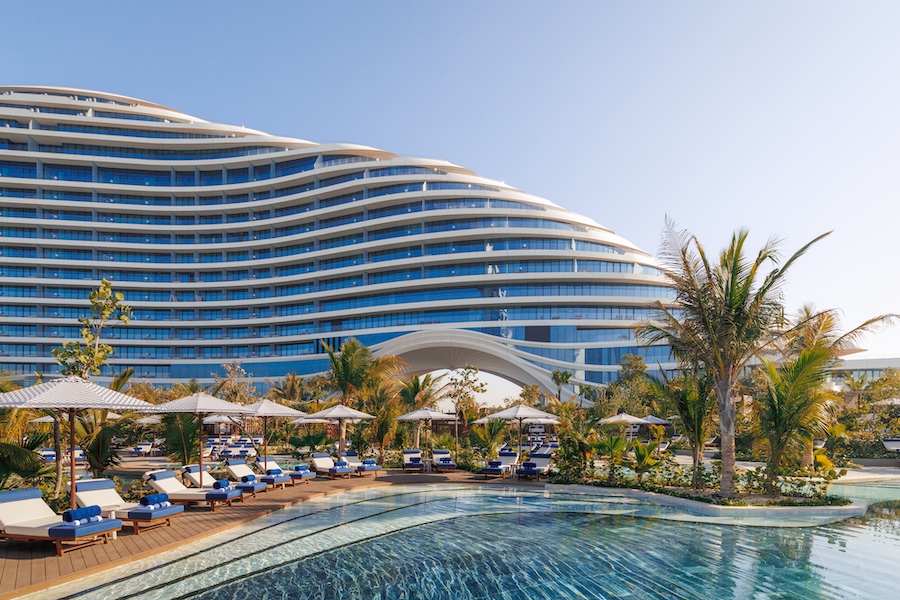Antartica’s architecture gets an upgrade, a queer food collective reimagines how we consume food, and Rosewood Little Dix makes a triumphant return. All this and more in this week’s Five.
Architecture goes to the ends of the earth

Comandante Ferraz Antarctic Station, the Brazilian Navy Base on King George Island in the Keller Peninsula, Antartica, will reopen next week, following a fire that destroyed the base in 2012. For the $99.6 million project, Brazilian firm Estudio 41 created two low-slung buildings to house laboratories and living quarters for resident scientists. Despite working under extreme climate conditions, the buildings resemble an art museum or boutique hotel, writes The New York Times, which explored the history and construction challenges of developing in Antartica—one of the coldest places on earth. For example, the Halley Research Station, founded by the Royal Society in 1956, went through many iterations before Hugh Broughton Architects designed the final version, Halley VI, in 2005 to last 20 years. While original projects emphasized keeping the weather out, recent projects are focused on using architecture to improve both wellbeing and operational efficiency. What’s more, other countries—from India and Spain to the U.S.—have taken notice, hiring firms to create something special.
All Aboard! Virgin plans high-speed train from California to Las Vegas

The inimitable Richard Branson—who has redefined aviation, the high seas, and hotels—has announced Virgin Trains USA. The $4.8 billion high-speed electric train project is planned to connect Southern California and Las Vegas by 2023, writes Dezeen. California recently approved a $3.25 billion bond request for the project, which will cover 180 miles in 90 minutes and, if approved, will be constructed along the U.S. north-south highway Interstate 15. The project is modeled after the the Brightline system that connects Miami, Fort Lauderdale, and West Palm Beach, which was completed in January 2018.
Rosewood Little Dix Bay makes a comeback

After receiving significant damage during Hurricane Irma in 2017, the iconic Rosewood Little Dix Bay resort has returned its original splendor. Founded by conservationist and naturalist Laurance Rockefeller in 1964, the historic getaway for celebrities and royals underwent a comprehensive renovation from New York-based design firm Meyer Davis, which drew inspiration from vintage sea planes and Slim Aarons photography. With sustainability top of mind (composting is done onsite), the redesign emphasizes natural materials with a seamless connection to the lush landscape. In addition, the resort now boasts state-of-the-art hurricane-proof windows, protective shuttering, and other preventive construction measures.
A new cooking collective reimagines how we think about food

Formed last year by Obbi Salvör Menuez, Precious Okoyomon and Quori Theodor, New York-based queer cooking collective Spiral Theory Test Kitchen (STTK) is reimagining how we consume and think about food, according to a profile in Vogue. Informed by poetry, sculpture, and theory, the trio creates high-concept dishes like “Beginning where you and me ends, where we don’t so much come but are already here,” which reads like a poem. The collective not only pushes boundaries with their methods but also with their visuals: The messier, weirder, wilder the food looks, the better.
Coco Chanel’s “love nest” transforms to a boutique hotel

Who wouldn’t be thrilled to spend a weekend Coco Chanel’s summer home? Located in the Scottish Highlands, the derelict Rosehall Estate is set to become a luxury boutique hotel, Business Insider reports. Dating back to 1820, the 22-room property sits on 700 acres of land and is home to five buildings, an expansive garden, a lake, and river. For the interiors, the fashion icon infused the space with an elegant simplicity, opting for colors and wallpapers inspired by her Parisian apartment. Much of her décor still remains and was “significantly radical for its time,” according to the statement from Historic Environment Scotland.



